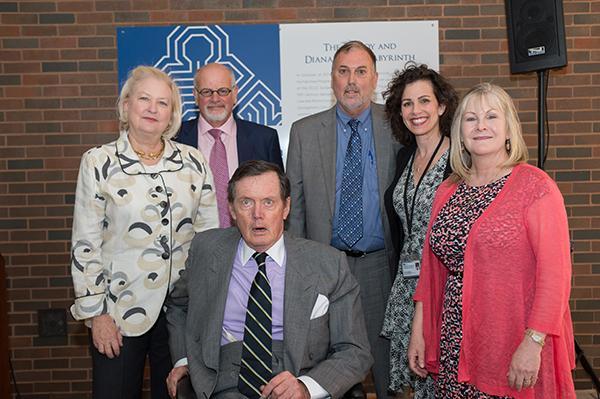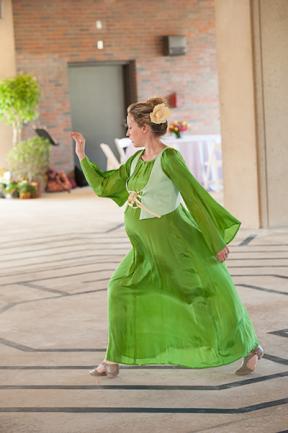The Freddy and Diana Prince Labyrinth

In October 2014, the Lombardi Arts and Humanities Program painted a navy blue labyrinth on the concrete area outside of the 2CCC Surgery Center Waiting Room based on a 13th-century design from the Cathedral of Reims in France.

The labyrinth is named in honor of Frederick Henry Prince IV and Diana Prince, whose longstanding support of research and wellness at Medstar Georgetown continually strengthens our hospital community.
A labyrinth is not a maze, but a walking meditation device with a single winding path from the edge to the center. There are no tricks, choices or dead ends in a labyrinth walk. The same path is used to return to the outside. Combining a number of symbols, including the circle, spiral and meander, the labyrinth represents the journey inward to our own true selves and back out into the everyday world.
Research conducted at the Harvard Medical School’s Mind/Body Medical Institute by Dr. Herbert Benson has found that focused walking meditations are highly efficient at reducing anxiety and eliciting what Dr. Benson calls the “relaxation response.” This effect has significant long-term health benefits. Labyrinth walking is among the simplest forms of focused walking meditations.

The purpose of the labyrinth is to encourage meditative walking for general health and stress reduction. Studies have shown that for patients, walking a labyrinth can help them gain a proactive attitude towards healing. For caregivers, the labyrinth can help reduce tension and help them relax during or after a particularly difficult day. Students can take a break from studying to walk the labyrinth. And, of course, all MGUH associates, as well as the general public, are welcome to walk towards improved wellness while here at the hospital.
Walking a labyrinth is a right brain activity (creative, intuitive, imaginative) and can induce or enhance a contemplative or meditative state of mind. It is a tool that can clear the mind, calm our anxieties during periods of transition and stress, guide healing, deepen self-knowledge, enhance creativity, allow for reconciliation, restore feelings of belonging to a community and lead to personal and spiritual growth.
The Medstar Georgetown Labyrinth is not tied to any one faith and therefore offers an ecumenical, interfaith and/or generic environment for people of all cultures and religions to enjoy.
